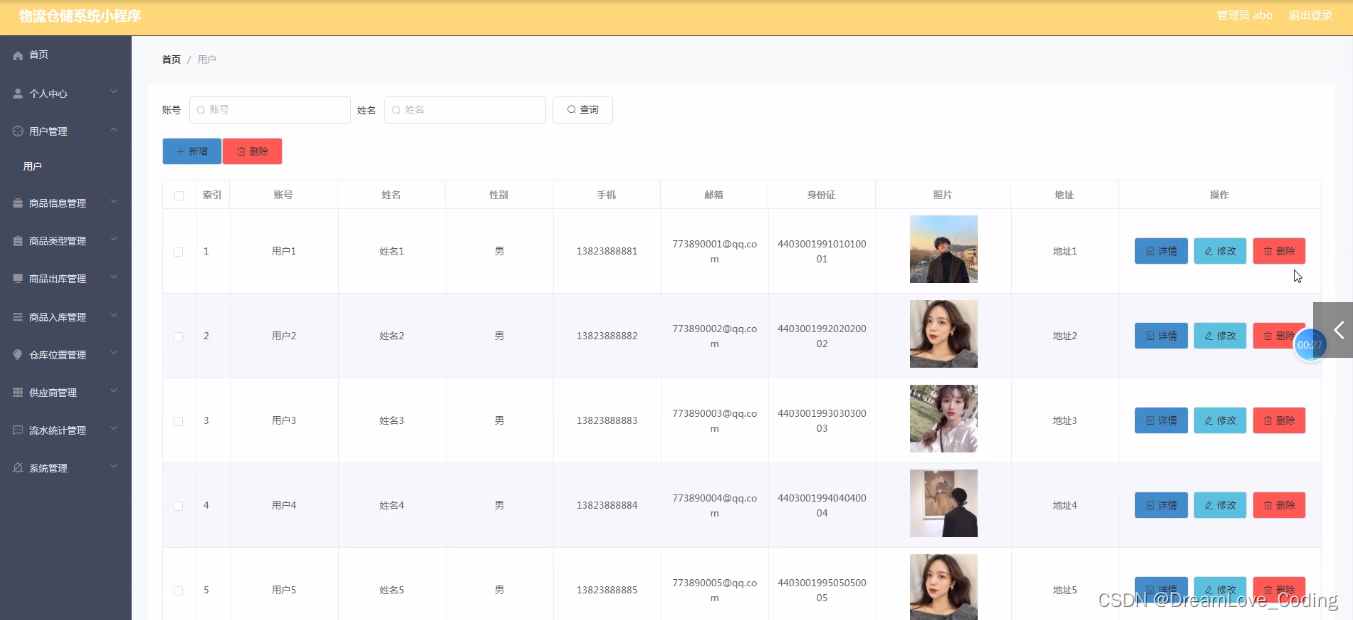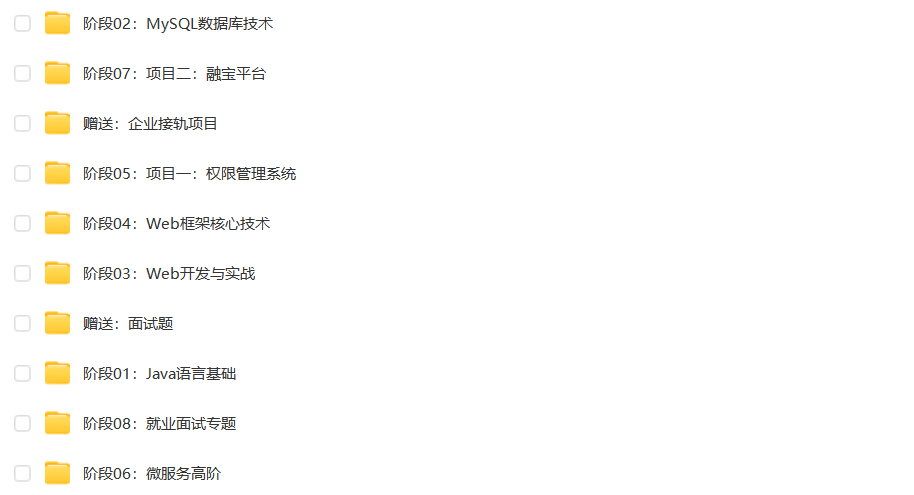1. Python3 基础语法
缩进:Python 使用缩进来表示代码块,通常使用 4 个空格。
语句:一行代码就是一个语句。
变量:不需要声明类型,直接赋值即可。
2. Python3 基本数据类型
Python 中的基本数据类型包括整数、浮点数、字符串、布尔值等。
整数 (int)
整数是没有小数部分的数字。Python 中的整数可以是正数、负数或零。
# 创建整数
a = 10
b = -5
# 基本运算
sum_ab = a + b # 加法
diff_ab = a - b # 减法
product_ab = a * b # 乘法
quotient_ab = a // b # 整除
remainder_ab = a % b # 取模(余数)
power_ab = a ** b # 幂
print(sum_ab) # 输出: 5
print(diff_ab) # 输出: 15
print(product_ab) # 输出: -50
print(quotient_ab) # 输出: -2
print(remainder_ab) # 输出: 0
print(power_ab) # 输出: 0.0001
# 类型检查
print(type(a)) # 输出: <class 'int'>
浮点数 (float)
浮点数是有小数部分的数字。Python 中的浮点数可以表示非常大或非常小的数值。
# 创建浮点数
x = 3.14
y = -2.718
# 基本运算
sum_xy = x + y # 加法
diff_xy = x - y # 减法
product_xy = x * y # 乘法
quotient_xy = x / y # 除法
power_xy = x ** y # 幂
print(sum_xy) # 输出: 0.422
print(diff_xy) # 输出: 5.858
print(product_xy) # 输出: -8.53952
print(quotient_xy) # 输出: -1.155506858130294
print(power_xy) # 输出: 0.04305006074309672
# 类型检查
print(type(x)) # 输出: <class 'float'>
字符串 (str)
字符串是由字符组成的序列。在 Python 中,字符串是不可变的,可以通过单引号 (') 或双引号 (") 来定义。
# 创建字符串
greeting = "Hello, World!"
name = 'Alice'
# 字符串拼接
full_greeting = greeting + " My name is " + name
print(full_greeting) # 输出: Hello, World! My name is Alice
# 字符串格式化
age = 25
formatted_string = f"My name is {name} and I am {age} years old."
print(formatted_string) # 输出: My name is Alice and I am 25 years old.
# 使用 .format()
formatted_string_2 = "My name is {} and I am {} years old.".format(name, age)
print(formatted_string_2) # 输出: My name is Alice and I am 25 years old.
# 访问字符
print(greeting[0]) # 输出: H
# 切片
print(greeting[7:]) # 输出: World!
print(greeting[:5]) # 输出: Hello
print(greeting[3:9]) # 输出: lo, Wo
# 字符串长度
print(len(greeting)) # 输出: 13
# 字符串方法``upper_greeting = greeting.upper() # 转换为大写
lower_greeting = greeting.lower() # 转换为小写
title_greeting = greeting.title() # 每个单词首字母大写
print(upper_greeting) # 输出: HELLO, WORLD!
print(lower_greeting) # 输出: hello, world!
print(title_greeting) # 输出: Hello, World!
# 替换子字符串
replaced_greeting = greeting.replace("World", "Python")
print(replaced_greeting) # 输出: Hello, Python!
# 类型检查
print(type(greeting)) # 输出: <class 'str'>
布尔值 (bool)
布尔值用于表示真或假。在 Python 中,布尔值只有两个:True 和 False。
# 创建布尔值
is_true = True
is_false = False
# 布尔运算
and_result = is_true and is_false # 逻辑与
or_result = is_true or is_false # 逻辑或
not_result = not is_true # 逻辑非
print(and_result) # 输出: False
print(or_result) # 输出: True
print(not_result) # 输出: False
# 与其他类型的转换
zero = 0
non_zero = 10
empty_list = []
non_empty_list = [1, 2, 3]
print(bool(zero)) # 输出: False
print(bool(non_zero)) # 输出: True
print(bool(empty_list)) # 输出: False
print(bool(non_empty_list)) # 输出: True
# 类型检查
print(type(is_true)) # 输出: <class 'bool'>
类型转换
有时需要将一个数据类型转换为另一个。Python 提供了多种内置函数来实现这一目的:
int():将其他类型转换为整数。
float():将其他类型转换为浮点数。
str():将其他类型转换为字符串。
bool():将其他类型转换为布尔值。
# 类型转换``num_str = "100"
num_int = int(num_str) # 转换为整数
num_float = float(num_str) # 转换为浮点数
print(num_int) # 输出: 100
print(num_float) # 输出: 100.0
# 布尔值转换
zero = 0
non_zero = 1
empty_list = []
non_empty_list = [1, 2, 3]
print(bool(zero)) # 输出: False
print(bool(non_zero)) # 输出: True
print(bool(empty_list)) # 输出: False
print(bool(non_empty_list)) # 输出: True
# 字符串转换
number = 123
string_number = str(number)
print(string_number) # 输出: 123
3. Python3 数据类型转换
可以使用内置函数进行数据类型转换。
int():将其他类型转换为整数。
float():将其他类型转换为浮点数。
str():将其他类型转换为字符串。
bool():将其他类型转换为布尔值。
num_str = "100"
num_int = int(num_str) # 转换为整数
num_float = float(num_str) # 转换为浮点数
print(type(num_int)) # 输出:
print(type(num_float)) # 输出:
bool_value = bool(0) # 转换为布尔值
print(bool_value) # 输出: False
4. Python3 解释器
Python 解释器是运行 Python 代码的程序。可以通过命令行或集成开发环境(IDE)使用。
命令行:
python -c "print('Hello, World!')"
交互模式:
>>> print("Hello, World!")
>Hello, World!
5. Python3 注释
注释用于解释代码,不会被解释器执行。
单行注释:使用 #。
多行注释:使用三引号 ‘’’ 或 “”"。
# 这是一个单行注释
print("Hello, World!")
"""
这是多行注释
可以跨越多行
"""
print("这是一个多行注释的例子")
6. Python3 运算符
运算符用于执行各种操作,如算术运算、比较、逻辑运算等。
算术运算符:+, -, *, /, %, //, **
比较运算符:==, !=, >, <, >=, <=
逻辑运算符:and, or, not
位运算符:&, |, ^, ~, <<, >>
a = 10
b = 3
# 算术运算符
print(a + b) # 加法
print(a - b) # 减法
print(a * b) # 乘法
print(a / b) # 除法
print(a % b) # 取模
print(a // b) # 整除
print(a ** b) # 幂
# 比较运算符
print(a == b) # 等于
print(a != b) # 不等于
print(a > b) # 大于
print(a < b) # 小于
print(a >= b) # 大于等于
print(a <= b) # 小于等于
# 逻辑运算符
print(a > 0 and b > 0) # 与
print(a > 0 or b > 0) # 或
print(not (a > 0)) # 非
7. Python3 数字 (Number)
数字类型包括整数、浮点数和复数。
整数 (int):
浮点数 (float):
复数 (complex):
a = 10 # int
b = 3.14 # float
c = 2 + 3j # complex
print(type(a)) # 输出:
print(type(b)) # 输出:
print(type(c)) # 输出:
8. Python3 字符串
字符串是由字符组成的序列,支持多种操作。
创建字符串:使用单引号 ’ ’ 或双引号 " "。
访问字符:通过索引访问。
切片:获取子字符串。
常用方法:len(), upper(), lower(), strip(), split(), join() 等。
s = "Hello, World!"
# 访问字符
print(s[0]) # 输出: H
# 切片
print(s[0:5]) # 输出: Hello
# 字符串长度
print(len(s)) # 输出: 13
# 转换大小写
print(s.upper()) # 输出: HELLO, WORLD!
print(s.lower()) # 输出: hello, world!
# 去除空白
s_with_spaces = " Hello, World! "
print(s_with_spaces.strip()) # 输出: Hello, World!
# 分割字符串
words = s.split(", ")
print(words) # 输出: ['Hello', 'World!']
# 连接字符串
joined = "-".join(words)
print(joined) # 输出: Hello-World!
9. Python3 列表
列表是有序的可变集合。
创建列表:使用方括号 []。
访问元素:通过索引访问。
修改元素:通过索引修改。
常用方法:append(), extend(), insert(), remove(), pop(), sort(), reverse() 等。
fruits = ["apple", "banana", "cherry"]
# 访问元素
print(fruits[0]) # 输出: apple
# 修改元素
fruits[0] = "orange"
print(fruits) # 输出: ['orange', 'banana', 'cherry']
# 添加元素
fruits.append("grape")
print(fruits) # 输出: ['orange', 'banana', 'cherry', 'grape']
# 插入元素
fruits.insert(1, "kiwi")
print(fruits) # 输出: ['orange', 'kiwi', 'banana', 'cherry', 'grape']
# 删除元素
fruits.remove("banana")
print(fruits) # 输出: ['orange', 'kiwi', 'cherry', 'grape']
# 排序
fruits.sort()
print(fruits) # 输出: ['cherry', 'grape', 'kiwi', 'orange']
10. Python3 元组
元组是有序的不可变集合。
创建元组:使用圆括号 ()。
访问元素:通过索引访问。
元组是不可变的:不能修改、添加或删除元素。
coordinates = (10, 20)
# 访问元素
print(coordinates[0]) # 输出: 10
# 元组解包
x, y = coordinates
print(x, y) # 输出: 10 20
11. Python3 字典
字典是键值对的无序集合。
创建字典:使用花括号 {}。
访问元素:通过键访问。
修改元素:通过键修改。
常用方法:keys(), values(), items(), get(), update(), pop(), clear() 等。
person = {
"name": "Alice",
"age": 25,
"city": "New York"
}
# 访问元素
print(person["name"]) # 输出: Alice
# 修改元素
person["age"] = 26
print(person) # 输出: {'name': 'Alice', 'age': 26, 'city': 'New York'}
# 添加元素
person["email"] = "alice@example.com"
print(person) # 输出: {'name': 'Alice', 'age': 26, 'city': 'New York', 'email': 'alice@example.com'}
# 删除元素
del person["city"]
print(person) # 输出: {'name': 'Alice', 'age': 26, 'email': 'alice@example.com'}
# 获取所有键
print(person.keys()) # 输出: dict_keys(['name', 'age', 'email'])
# 获取所有值
print(person.values()) # 输出: dict_values(['Alice', 26, 'alice@example.com'])
# 获取所有键值对
print(person.items()) # 输出: dict_items([('name', 'Alice'), ('age', 26), ('email', 'alice@example.com')])
12. Python3 集合
集合是无序的不重复元素集合。
创建集合:使用花括号 {} 或 set() 函数。
添加元素:使用 add() 方法。
删除元素:使用 remove() 或 discard() 方法。
常用方法:union(), intersection(), difference(), issubset(), issuperset() 等。
fruits = {"apple", "banana", "cherry"}
# 添加元素
fruits.add("orange")
print(fruits) # 输出: {'banana', 'cherry', 'apple', 'orange'}
# 删除元素
fruits.remove("banana")
print(fruits) # 输出: {'cherry', 'apple', 'orange'}
# 集合运算
set1 = {1, 2, 3}
set2 = {3, 4, 5}
# 并集
print(set1.union(set2)) # 输出: {1, 2, 3, 4, 5}
# 交集
print(set1.intersection(set2)) # 输出: {3}
# 差集
print(set1.difference(set2)) # 输出: {1, 2}
13. Python3 条件控制
条件控制用于根据条件执行不同的代码块。
if 语句:
elif 语句:
else 语句:
age = 20
if age < 18:
print("未成年")
elif age >= 18 and age < 60:
print("成年")
else:
print("老年")
14. Python3 循环语句
循环用于重复执行一段代码。
for 循环:遍历序列(如列表、元组、字符串等)。
while 循环:在条件为真时重复执行。
# for 循环
fruits = ["apple", "banana", "cherry"]
for fruit in fruits:
print(fruit)
# while 循环
count = 0
while count < 5:
print(count)
count += 1
15. Python3 编程第一步
编写一个简单的程序,打印 “Hello, World!”。
print("Hello, World!")
16. Python3 推导式
推导式是一种简洁的方式,用于生成列表、字典和集合。
列表推导式:
字典推导式:
集合推导式:
# 列表推导式
squares = [x ** 2 for x in range(10)]
print(squares) # 输出: [0, 1, 4, 9, 16, 25, 36, 49, 64, 81]
# 字典推导式
squares_dict = {x: x ** 2 for x in range(10)}
print(squares_dict) # 输出: {0: 0, 1: 1, 2: 4, 3: 9, 4: 16, 5: 25, 6: 36, 7: 49, 8: 64, 9: 81}
# 集合推导式
squares_set = {x ** 2 for x in range(10)}
print(squares_set) # 输出: {0, 1, 64, 4, 36, 9, 16, 81, 49, 25}
17. Python3 迭代器与生成器
迭代器和生成器用于处理大量数据时节省内存。
迭代器:实现了 __iter__ 和 __next__ 方法的对象。
生成器:使用 yield 关键字定义的函数。
# 迭代器
my_list = [1, 2, 3]
my_iter = iter(my_list)
print(next(my_iter)) # 输出: 1
print(next(my_iter)) # 输出: 2
print(next(my_iter)) # 输出: 3
# 生成器
def generate_numbers(n):
for i in range(n):
yield i``gen = generate_numbers(5)
for num in gen:
print(num) # 输出: 0 1 2 3 4
18. Python3 函数
函数是组织代码的一种方式,可以重用代码。
定义函数:使用 def 关键字。
调用函数:使用函数名加括号。
参数:可以传递参数给函数。
返回值:使用 return 语句返回值。
def greet(name):
return f"你好, {name}!"
print(greet("Alice")) # 输出: 你好, Alice!
19. Python3 lambda
lambda 表达式是一种简洁的定义匿名函数的方式。
# 定义 lambda 函数
add = lambda x, y: x + y
print(add(3, 5)) # 输出: 8
20. Python3 装饰器
装饰器是一种特殊类型的函数,用于修改其他函数的功能或行为。
def my_decorator(func):
def wrapper():
print("Something is happening before the function is called.")
func()
print("Something is happening after the function is called.")
return wrapper
@my_decorator
def say_hello():
print("Hello!")
say_hello()
21. Python3 数据结构
Python 提供了多种内置的数据结构,如列表、元组、字典和集合。
列表:有序的可变集合。
元组:有序的不可变集合。
字典:键值对的无序集合。
集合:无序的不重复元素集合。
列表 (List)
列表是有序的可变集合。可以包含不同类型的元素,并且支持索引和切片操作。
# 创建列表
my_list = [1, 2, 3, 'four', 5.0]
# 访问元素
print(my_list[0]) # 输出: 1
print(my_list[-1]) # 输出: 5.0
# 修改元素
my_list[3] = 'FOUR'
print(my_list) # 输出: [1, 2, 3, 'FOUR', 5.0]
# 添加元素
my_list.append('six')
print(my_list) # 输出: [1, 2, 3, 'FOUR', 5.0, 'six']
# 插入元素
my_list.insert(2, 'two-and-a-half')
print(my_list) # 输出: [1, 2, 'two-and-a-half', 3, 'FOUR', 5.0, 'six']
# 删除元素
del my_list[2]
print(my_list) # 输出: [1, 2, 3, 'FOUR', 5.0, 'six']
# 切片
sliced_list = my_list[1:4]
print(sliced_list) # 输出: [2, 3, 'FOUR']
# 列表推导式
squares = [x ** 2 for x in range(5)]
print(squares) # 输出: [0, 1, 4, 9, 16]
元组 (Tuple)
元组是有序的不可变集合。一旦创建,其内容不能被修改。通常用于表示固定的数据集。
# 创建元组``my_tuple = (1, 2, 3, 'four', 5.0)`` ``# 访问元素``print(my_tuple[0]) # 输出: 1``print(my_tuple[-1]) # 输出: 5.0``# 元组解包``a, b, c, d, e = my_tuple``print(a, b, c, d, e) # 输出: 1 2 3 four 5.0``# 合并元组``tuple1 = (1, 2)``tuple2 = (3, 4)``combined_tuple = tuple1 + tuple2``print(combined_tuple) # 输出: (1, 2, 3, 4)`` ``# 元组中的嵌套``nested_tuple = ((1, 2), (3, 4))``print(nested_tuple[0][1]) # 输出: 2``# 元组推导式(生成器表达式)``squares = tuple(x ** 2 for x in range(5))``print(squares) # 输出: (0, 1, 4, 9, 16)
字典 (Dictionary)
字典是键值对的无序集合。每个键都是唯一的,并且关联着一个值。
# 创建字典
my_dict = {
'name': 'Alice',
'age': 25,
'city': 'New York'
}
# 访问元素
print(my_dict['name']) # 输出: Alice
# 修改元素
my_dict['age'] = 26
print(my_dict) # 输出: {'name': 'Alice', 'age': 26, 'city': 'New York'}
# 添加元素
my_dict['email'] = 'alice@example.com'
print(my_dict) # 输出: {'name': 'Alice', 'age': 26, 'city': 'New York', 'email': 'alice@example.com'}
# 删除元素
del my_dict['city']
print(my_dict) # 输出: {'name': 'Alice', 'age': 26, 'email': 'alice@example.com'}
# 检查键是否存在
if 'email' in my_dict:
print("Email exists") # 输出: Email exists
# 获取所有键、值和项
keys = my_dict.keys()
values = my_dict.values()
items = my_dict.items()
print(keys) # 输出: dict_keys(['name', 'age', 'email'])
print(values) # 输出: dict_values(['Alice', 26, 'alice@example.com'])
print(items) # 输出: dict_items([('name', 'Alice'), ('age', 26), ('email', 'alice@example.com')])
# 字典推导式
squares_dict = {x: x ** 2 for x in range(5)}
print(squares_dict) # 输出: {0: 0, 1: 1, 2: 4, 3: 9, 4: 16}
集合 (Set)
集合是无序的不重复元素集合。常用于数学上的集合操作,如并集、交集和差集等。
# 创建集合
my_set = {1, 2, 3, 4, 5}
# 访问元素
# 注意:集合是无序的,不能通过索引访问元素
# 添加元素
my_set.add(6)
print(my_set) # 输出: {1, 2, 3, 4, 5, 6}
# 删除元素
my_set.remove(3)
print(my_set) # 输出: {1, 2, 4, 5, 6}
# 集合运算
set1 = {1, 2, 3, 4}
set2 = {3, 4, 5, 6}
# 并集
union_set = set1.union(set2)
print(union_set) # 输出: {1, 2, 3, 4, 5, 6}
# 交集
intersection_set = set1.intersection(set2)
print(intersection_set) # 输出: {3, 4}
# 差集
difference_set = set1.difference(set2)
print(difference_set) # 输出: {1, 2}
# 对称差集
symmetric_difference_set = set1.symmetric_difference(set2)
print(symmetric_difference_set) # 输出: {1, 2, 5, 6}
# 子集和超集
print(set1.issubset(union_set)) # 输出: True
print(union_set.issuperset(set1)) # 输出: True
# 集合推导式
squares_set = {x ** 2 for x in range(5)}
print(squares_set) # 输出: {0, 1, 4, 9, 16}
22. Python3 模块
模块是包含 Python 代码的文件,可以导入并在其他文件中使用。
导入模块:使用 import 关键字。
从模块导入特定内容:使用 from … import …。
# 导入整个模块
import math
print(math.sqrt(16)) # 输出: 4.0
# 从模块导入特定内容
from datetime import datetime
now = datetime.now()
print(now) # 输出: 当前日期和时间
23. Python3 输入和输出
输入:使用 input() 函数获取用户输入。
输出:使用 print() 函数输出内容。
name = input("请输入你的名字: ")
print(f"你好, {name}!")
24. Python3 File
文件操作用于读写文件。
打开文件:使用 open() 函数。
读取文件:使用 read() 或 readline() 方法。
写入文件:使用 write() 方法。
关闭文件:使用 close() 方法。
# 写入文件
with open("example.txt", "w") as file:
file.write("Hello, World!\n")
# 读取文件
with open("example.txt", "r") as file:
content = file.read()
print(content) # 输出: Hello, World!
25. Python3 OS
os 模块提供了许多操作系统相关的功能。
获取当前工作目录:使用 os.getcwd()。
列出目录中的文件:使用 os.listdir()。
创建目录:使用 os.mkdir()。
删除目录:使用 os.rmdir()。
import os
# 获取当前工作目录
current_dir = os.getcwd()
print(current_dir)
# 列出目录中的文件
files = os.listdir(".")
print(files)
# 创建目录
os.mkdir("new_folder")
# 删除目录
os.rmdir("new_folder")
26. Python3 错误和异常
错误和异常处理用于捕获和处理程序中的错误。
try-except:捕获异常。
finally:无论是否发生异常,都会执行。
raise:手动抛出异常。
try:
result = 10 / 0
except ZeroDivisionError:
print("除零错误")
finally:
print("无论是否发生异常,都会执行这里")
# 手动抛出异常
raise ValueError("这是一个自定义的错误")
27. Python3 面向对象
面向对象编程(OOP)是一种编程范式,通过类和对象来组织代码。
类:使用 class 关键字定义。
对象:类的实例。
属性:类的变量。
方法:类的函数。
class Person:
def __init__(self, name, age):
self.name = name
self.age = age
def greet(self):
print(f"Hello, my name is {self.name} and I am {self.age} years old.")
# 创建对象
person = Person("Alice", 25)
# 访问属性
print(person.name) # 输出: Alice
# 调用方法
person.greet() # 输出: Hello, my name is Alice and I am 25 years old.
28. Python3 命名空间/作用域
命名空间和作用域决定了变量的可见性和生命周期。
全局命名空间:全局变量。
局部命名空间:局部变量。
嵌套作用域:内部函数可以访问外部函数的变量。
x = 10 # 全局变量
def outer_function():
y = 20 # 局部变量
def inner_function():
z = 30 # 局部变量
print(z) # 输出: 30
print(y) # 输出: 20
print(x) # 输出: 10
inner_function()
outer_function()
29. Python3 标准库概览
Python 标准库提供了大量的模块和函数,涵盖了各种常见的任务。
os:操作系统接口。
sys:系统相关功能。
math:数学函数。
datetime:日期和时间处理。
random:随机数生成。
re:正则表达式。
json:JSON 编码和解码。
import os
import sys
import math
import datetime
import random
import re
import json
# 示例
print(os.getcwd())
print(sys.version)
print(math.pi)
print(datetime.datetime.now())
print(random.randint(1, 10))
print(re.match(r'\d+', '123abc'))
print(json.dumps({"name": "Alice", "age": 25}))
关于Python技术储备
学好 Python 不论是就业还是做副业赚钱都不错,但要学会 Python 还是要有一个学习规划。最后给大家分享一份全套的 Python 学习资料,给那些想学习 Python 的小伙伴们一点帮助!
包括:Python激活码+安装包、Python web开发,Python爬虫,Python数据分析,人工智能、自动化办公等学习教程。带你从零基础系统性的学好Python!
点击领取,100%免费!
👉Python所有方向的学习路线👈
Python所有方向路线就是把Python常用的技术点做整理,形成各个领域的知识点汇总,它的用处就在于,你可以按照上面的知识点去找对应的学习资源,保证自己学得较为全面。(全套教程文末领取)

👉Python学习视频600合集👈
观看零基础学习视频,看视频学习是最快捷也是最有效果的方式,跟着视频中老师的思路,从基础到深入,还是很容易入门的。

温馨提示:篇幅有限,已打包文件夹,获取方式在:文末
👉Python70个实战练手案例&源码👈
光学理论是没用的,要学会跟着一起敲,要动手实操,才能将自己的所学运用到实际当中去,这时候可以搞点实战案例来学习。

👉Python大厂面试资料👈
我们学习Python必然是为了找到高薪的工作,下面这些面试题是来自阿里、腾讯、字节等一线互联网大厂最新的面试资料,并且有阿里大佬给出了权威的解答,刷完这一套面试资料相信大家都能找到满意的工作。


👉Python副业兼职路线&方法👈
学好 Python 不论是就业还是做副业赚钱都不错,但要学会兼职接单还是要有一个学习规划。

👉 这份完整版的Python全套学习资料已经上传,朋友们如果需要可以扫描下方CSDN官方认证二维码或者点击链接免费领取【保证100%免费】




















